Hi I am developing a game that a fighter moves right and left and shoots. For the shooting part, I tried to use a for loop to slow the speed down and user can see the bullet. But it wasn't enough. I used sleep too but not a good answer. Now I have no idea what to do. Here is my paintComponent calss:
package game;
import java.awt.Color;
import java.awt.Graphics;
import java.awt.Graphics2D;
import java.awt.event.KeyEvent;
import java.awt.event.KeyListener;
import java.awt.geom.Rectangle2D;
import java.awt.image.BufferedImage;
import java.io.File;
import java.io.IOException;
import java.util.ArrayList;
import javax.imageio.ImageIO;
import javax.swing.JPanel;
public class PaintComponent extends JPanel implements KeyListener {
int dx = 200-15;
int dy = 450;
int my = 450;
ArrayList<Bullet> bullets = new ArrayList<>();
public Rectangle2D rec =new Rectangle2D.Double(dx , dy, 30, 10);
Rectangle2D recB = new Rectangle2D.Double(dx+13 , my, 6, 6);
// public Polygon pol = new Polygon
private BufferedImage imageBg, imageFi, imageBu;
public PaintComponent() {
this.addKeyListener(this);
this.setFocusable(true);
this.setBackground(Color.white);
try {
imageBg = ImageIO.read(new File("C:\\Java\\NetbeansProjects\\Game\\bg.jpg"));
imageBu = ImageIO.read(new File("C:\\Java\\NetbeansProjects\\Game\\bul.png"));
imageFi = ImageIO.read(new File("C:\\Java\\NetbeansProjects\\Game\\fi.png"));
} catch (IOException ex) {
System.out.println("No background image is available!");
}
}
public void shoot(){
if(bullets != null){
for(int i=0; i<bullets.size(); i++){
for(int j=0; j<200; j++){
bullets.get(i).setdy(my-j);
}
System.out.println(bullets.get(i).getdy());
}
}
}
public void moveRec(KeyEvent evt){
switch(evt.getKeyCode()){
case KeyEvent.VK_LEFT:
dx -= 5;
rec.setRect(dx, dy, 30, 10);
recB.setRect(dx+13, dy, 6, 6);
repaint();
break;
case KeyEvent.VK_RIGHT:
dx += 5;
rec.setRect(dx, dy, 30, 10);
recB.setRect(dx+13, dy, 6, 6);
repaint();
break;
case KeyEvent.VK_SPACE:
Bullet b = new Bullet(dx, dy);
bullets.add(b);
shoot();
break;
}
}
@Override
public void paintComponent(Graphics grphcs)
{super.paintComponent(grphcs);
Graphics2D gr = (Graphics2D) grphcs;
int X = (int) rec.getCenterX();
int Y = (int) rec.getCenterY();
gr.drawImage(imageBg, 0, 0, null);
gr.drawImage(imageFi, X-50, Y-75, null);
gr.setColor(Color.GRAY);
if(bullets != null){
for(int i=0;i<bullets.size();i++){
gr.drawImage(imageBu, null, bullets.get(i).getdx(), bullets.get(i).getdy());
repaint();
}
}
gr.draw(recB);
}
@Override
public void keyTyped(KeyEvent e) {
}
@Override
public void keyPressed(KeyEvent e)
{moveRec(e);}
@Override
public void keyReleased(KeyEvent e)
{}
}
and this is my bullet calss:
package game;
public class Bullet {
private int x, y, newy;
public Bullet(int x, int y){
this.x = x;
this.y = y;
}
public int getdy(){
return y;
}
public void setdy(int newy){
y = newy;
}
public int getdx(){
return x;
}
}
